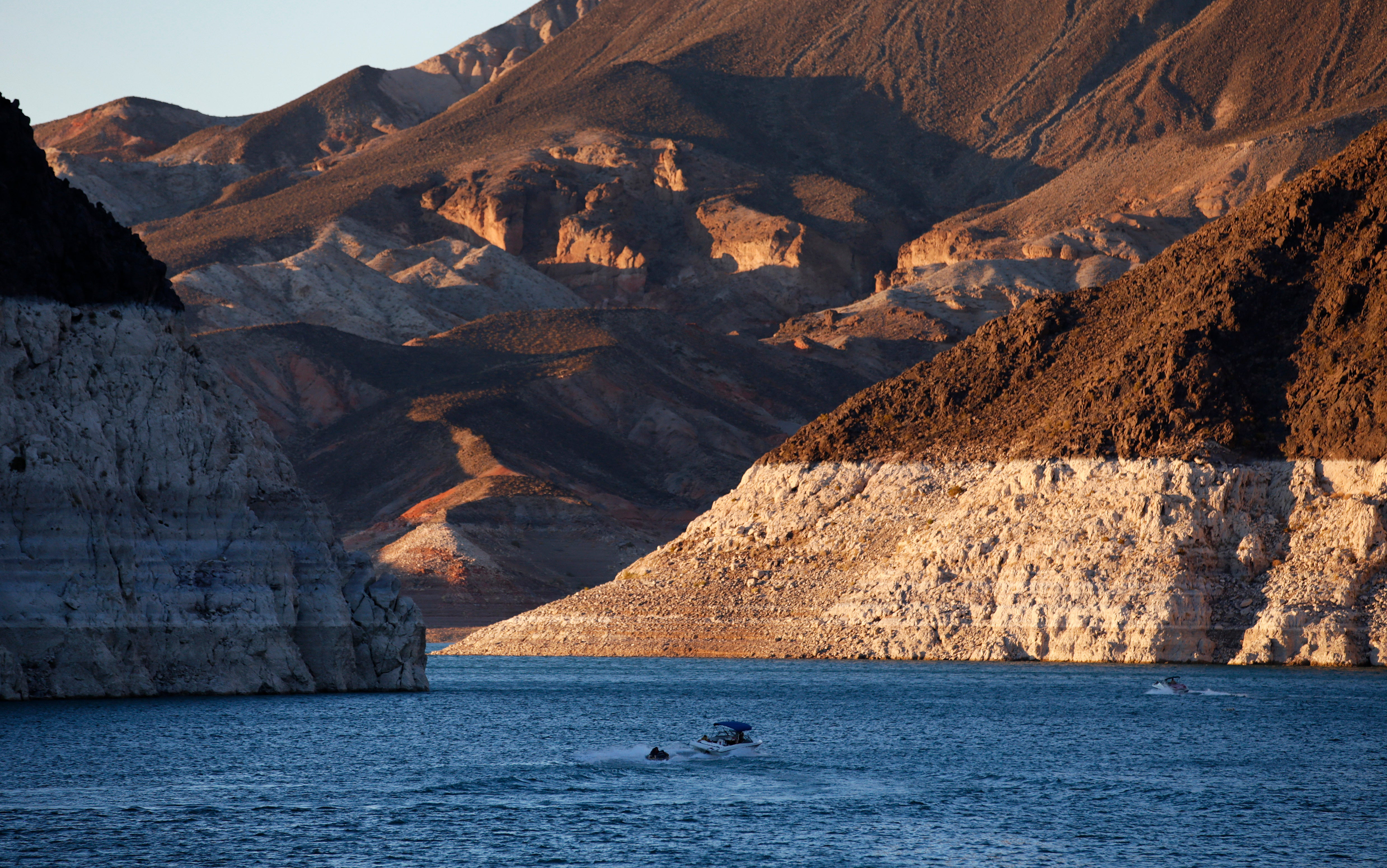US: More must be done to protect Colorado River from drought
A set of guidelines for managing the Colorado River helped seven Western states through a dry spell

Your support helps us to tell the story
From reproductive rights to climate change to Big Tech, The Independent is on the ground when the story is developing. Whether it's investigating the financials of Elon Musk's pro-Trump PAC or producing our latest documentary, 'The A Word', which shines a light on the American women fighting for reproductive rights, we know how important it is to parse out the facts from the messaging.
At such a critical moment in US history, we need reporters on the ground. Your donation allows us to keep sending journalists to speak to both sides of the story.
The Independent is trusted by Americans across the entire political spectrum. And unlike many other quality news outlets, we choose not to lock Americans out of our reporting and analysis with paywalls. We believe quality journalism should be available to everyone, paid for by those who can afford it.
Your support makes all the difference.A set of guidelines for managing the Colorado River helped several states through a dry spell, but it's not enough to keep key reservoirs in the American West from plummeting amid persistent drought and climate change, according to a U.S. report released Friday.
Millions of people in seven states and Mexico rely on the river for drinking water and growing crops. The 2007 guidelines were meant to lessen the blow of any future cuts in the water supply for growing areas, giving states an idea of what to expect each year and ways to manage the risks.
The report by the U.S. Bureau of Reclamation found that the guidelines provided stability, along with other agreements among the states and with Mexico, but they won’t be enough to sustain a region that’s getting warmer and drier and has demanded more from the Colorado River.
The guidelines and an overlapping drought contingency plan expire in 2026. Officials in Wyoming, Utah, Colorado, New Mexico Arizona, California and Nevada told the Interior Department on Thursday that they have started talking about what comes next.
“The people in the know realize they have a lot of work to do,” said Doug MacEachern, a spokesman for the Arizona Department of Water Resources.
The Bureau of Reclamation was tasked with reviewing the effectiveness of the 2007 guidelines before year's end to help with a baseline for the new negotiations. The guidelines spelled out the operations of the nation's two largest manmade lakes — Lake Powell along the Arizona-Utah border and Lake Mead along the Arizona-Nevada border — outlining what happens when the river can't supply the water that states were promised in the 1920s.
The guidelines allow water to be stored in Lake Mead, the reservoir created by the Hoover Dam. They set marks for the lake that would trigger water cuts to Nevada and Arizona. California and Mexico have been looped in on possible cuts in other plans.
The guidelines were meant to be flexible and encourage consensus among states, rather than the federal government dictating management of the river, and to avoid litigation because states were required to consult with each other before suing.
“As Westerners, we were all too familiar with the negative consequences of lawsuits challenging water operations in basins across the West,” Bureau of Reclamation Commissioner Brenda Burman wrote in the report's foreword. “Once litigation starts, flexibility, innovation and problem solving often give way to rigid positioning and protection of positions.”
In comments before the report was finalized, Native American tribes said they largely were left out of the discussions that led to the guidelines and want a bigger role in the next round of talks, with recognition of their sovereign status. They hold the rights to 3.4 million acre-feet of water annually in the Colorado River basin.
Not all tribes, including the Navajo Nation and Hopi Tribe in northwestern Arizona, have secured the legal right to water in the basin.
When the 2007 guidelines went into effect, Lake Powell and Lake Mead together were about half full. Conservation, delayed water deliveries, a balancing act and other measures have kept them hovering at that level.
States, tribes, cities and other water users are expected to use the Bureau of Reclamation report as a resource for deciding what will replace the guidelines. Arizona got a head-start on the work this year when it reassembled a group that worked on the state's drought contingency plan.